Pennyroyal (Mentha pulegium) Non-Native
Pennyroyal (Mentha pulegium)
Parts used: aerial parts
Medicinal uses: A good digestive tonic, it stimulates digestive juices, relieves flatulence and colic; a good remedy for headaches and for minor respiratory infections helping to keep fever and congestion in check; a powerful stimulant to the uterine muscle encouraging menstruation; externally it can be sued to relieve itchiness and rheumatic conditions including gout (Chevallier 234).
Additional uses: This plant is well regarded as an insect repellent, for both humans and pets (Kowalchik 413)
Cautions: Do not take during pregnancy or if menstrual bleeding is heavy (Chevallier 234).
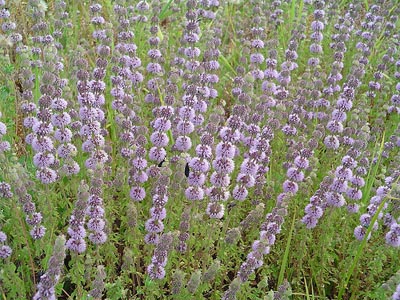
Pacific Northwest Medicinal Plant Guide (Check out all plants growing in Tryon Farm's medicinal garden!)
- Login to post comments



Pear, Asian (Pyrus spp.) Non-Native
Pear, Asian (Pyrus spp.)
Parts used: fruit
Nutritional information: an excellent source of water-soluble fibers, including pectin. They are also a good source of vitamin C, copper, vitamins B2 and E, and potassium (Murray 303).

Pacific Northwest Medicinal Plant Guide (Check out all plants growing in Tryon Farm's medicinal garden!)
- Login to post comments



Parsley (Petroselinium crispum) Non-Native
Parsley (Petroselinium crispum)
Parts used: leaves, root, seeds
Medicinal uses: Fresh leaves are highly nutritious; seeds have a stronger diuretic effect than the leaves, can be used in the treatment of gout, rheumatism, and arthritis; the root can be used for flatulence, cystitis, and rheumatic conditions; parsley can promote menstruation both in stimulating a delayed period and in relieving menstrual pain (Chevallier 245).
Nutritional information: Parsley is extremely rich in a large number of nutrients, chlorophyll, and carotenes. It is a very good source of vitamin C, folic acid, and iron. It is also a good source of minerals, including magnesium, calcium, potassium, and zinc as well as a good source of dietary fiber (Murray 220).
Additional uses: Infusions of parsley leaves and stems are said to be soothing and cleansing when added to bathwater. The oil is used in a variety of skin care products (Kowalchik 408).
Cautions: Excessive doses of seeds are toxic. Do not take the seeds during pregnancy or if suffering from kidney disease. Parsley is best avoided for nursing mothers as it can dry up the milk supply (Chevallier 245).
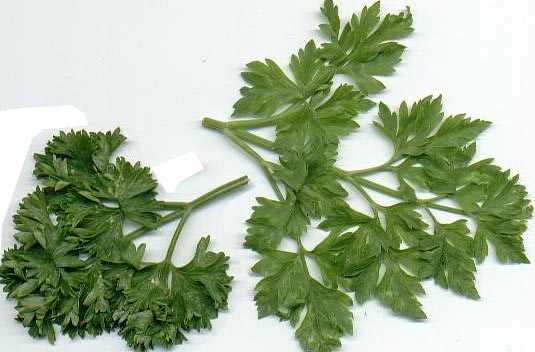
Pacific Northwest Medicinal Plant Guide (Check out all plants growing in Tryon Farm's medicinal garden!)
- Login to post comments



Oregon Grape (Mahonia aquifolium) Native
Oregon Grape (Mahonia aquifolium)
Parts used: root (young leaves as well)
Medicinal uses: Chiefly used for gastritis and general digestive weakness, to stimulate gallbladder function, and to reduce congestion (mainly of the gut). It also treats eczema, psoriasis, acne, boils, and herpes, and skin conditions linked to poor gallbladder function (Chevallier 177).Contains many of the same constituents as Goldenseal and can often be used in blends to replace this endangered herb
Additional uses: Yellow and tan dyes can be obtained from the roots and from the stems and leaves combined. The fruit yields a purplish blue color to wool mordanted with alum (Kowalchik 405).
Cautions: Avoid use during pregnancy (Chevallier 177).
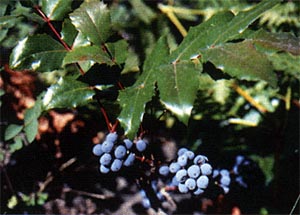
Pacific Northwest Medicinal Plant Guide (Check out all plants growing in Tryon Farm's medicinal garden!)
- Login to post comments



Oregano (Origanum vulgare) Non-Native
Oregano (Origanum vulgare)
Parts used: aerial parts, essential oil
Medicinal uses: Helps to settle flatulence and stimulates the flow of bile; strongly antiseptic, it may be taken to treat respiratory conditions such as coughs, tonsillitis, bronchitis, and asthma; also considered to be a useful promoter of menstruation; the diluted oil can be applied to toothache or painful joints (Chevallier 242).
Additional uses: This plant is well known for its culinary uses. Flowers of oregano can be used in flower and herb arrangements (Kowalchik 403).
Cautions: Do not take medicinal does during pregnancy. External use may cause irritation to the skin. Do not take the essential oil internally (Chevallier 242).
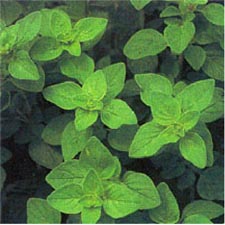
Pacific Northwest Medicinal Plant Guide (Check out all plants growing in Tryon Farm's medicinal garden!)
- Login to post comments



Olive (Olea europaea) Non-Native
Olive (Olea europaea)
Parts used: leaves, oil
Medicinal uses: The leaves lower blood pressure and help to improve the function of the circulatory system. The leaves are also mildly diuretic and may be used to treat conditions such as cystitis. There is also some research showing olive leaf’s ability to lower blood sugar levels and therefore being taken by some for diabetes. The oil is nourishing and improves the balance of fats within the blood. Traditionally olive oil has been taken with lemon juice to treat gallstones. The oil has a generally protective action on the digestive tract and is useful for dry skin.
Nutritional information: Olives and their oil are an excellent source of oleic acid, an omega-9 monounsaturated fat. They are also a good source of vitamin E. they also contain flavonoids (Murray 435).
Cautions: None known (Chevallier 241).
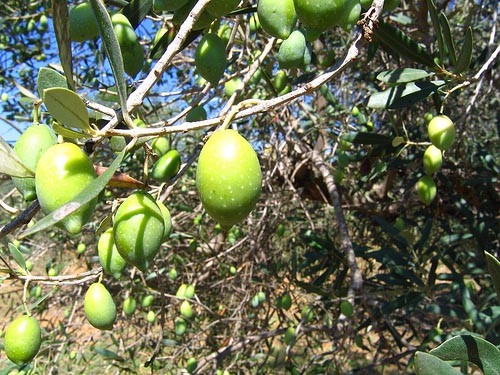
Pacific Northwest Medicinal Plant Guide (Check out all plants growing in Tryon Farm's medicinal garden!)
- Login to post comments



Oak, Garry (White) (Quercus garryana) Native
Oak, Garry (White) (Quercus garryana)
Parts used: acorns, bark
Medicinal and other uses: The acorns were leached of tannins and eaten, often ground into flour. The bark was one of the ingredients in the Saanich ‘4 barks’ medicine used against.
Cautions: None stated tuberculosis and other ailments (Pojar 50).
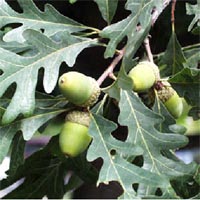
Pacific Northwest Medicinal Plant Guide (Check out all plants growing in Tryon Farm's medicinal garden!)
- Login to post comments



Mullein (Verbascum thapsus) Non-Native
Mullein (Verbascum thapsus)
Parts used: flowers, leaves
Medicinal uses: Dried flower petals and leaves treat coughs, influenza, bronchitis. Used as a diaphoretic and diuretic, to treat wounds and other skin disorders
Cautions: None stated.
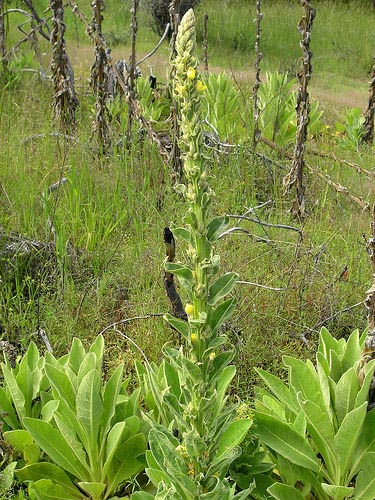
Pacific Northwest Medicinal Plant Guide (Check out all plants growing in Tryon Farm's medicinal garden!)
- Login to post comments



Mugwort (Artemisia vulgaris) Non-Native
Mugwort (Artemisia vulgaris)
Parts used: leaves, root
Medicinal uses: A digestive and tonic herb, it has a wide variety of traditional uses. Milder in action than most Artemisia species, it can be taken over the long term at a low dose to improve appetite, digestive function, and absorption of nutrients. In addition to encouraging the elimination of worms, mugwort increases bile flow and mildly induces the onset of menstruation. Mugwort is also an antiseptic and has been used in the treatment of malaria (Chevallier 173).
Additional uses: Mugwort leaves have a sage-like smell and are used to repel moths. The plant dries well and can be used in less formal herbal arrangements (Kowalchik 392).
Cautions: Do not take during pregnancy (Chevallier 173).
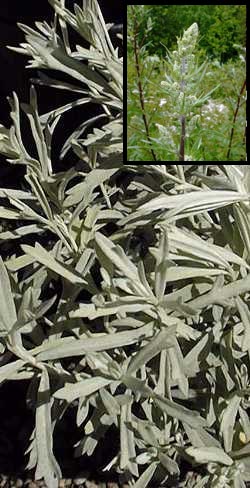
Pacific Northwest Medicinal Plant Guide (Check out all plants growing in Tryon Farm's medicinal garden!)
- Login to post comments



Motherwort (Leonarus cardiaca) Non-Native
Motherwort (Leonarus cardiaca)
Parts used: aerial portions
Medicinal uses: To treat nervous heart conditions. A gentle sedative and antispasmodic it encourages relaxation rather than drowsiness. Also used to calm anxiety during childbirth and used to stimulate uterine contractions.
Cautions: Do not take during pregnancy. It should also be avoided if there is heavy menstrual bleeding (Chevallier 226).

Pacific Northwest Medicinal Plant Guide (Check out all plants growing in Tryon Farm's medicinal garden!)
- Login to post comments



Feedback and participation welcome! Please send bug reports to web@tryonfarm.org








